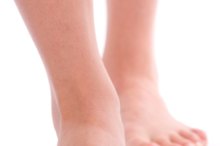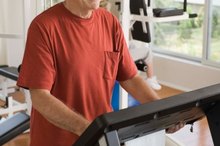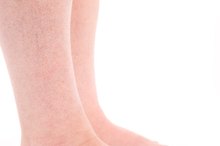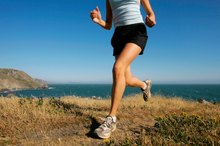What does fact checked mean?
At Healthfully, we strive to deliver objective content that is accurate and up-to-date. Our team periodically reviews articles in order to ensure content quality. The sources cited below consist of evidence from peer-reviewed journals, prominent medical organizations, academic associations, and government data.
- Cleveland Clinic: Peripheral Arterial Disease (PAD) and Exercise
- PubMedHealth: Peripheral Artery Disease-Legs
- PubMedHealth: Peripheral Artery Disease-Legs
The information contained on this site is for informational purposes only, and should not be used as a substitute for the advice of a professional health care provider. Please check with the appropriate physician regarding health questions and concerns. Although we strive to deliver accurate and up-to-date information, no guarantee to that effect is made.
Can Walking Improve Circulation?
Walking can help you improve circulation and decrease pain if you have poor circulation. This type of exercise is particularly helpful if you have peripheral artery disease, sometimes called lower extremity arterial disease 2. Peripheral artery disease affects the arms and legs, and it can affect the legs more than the arms. Atherosclerosis -- the buildup of plaque in your arteries that narrows the artery interior and decreases blood flow -- causes most cases of poor circulation, according to Better Medicine. Walking can help you prevent atherosclerosis in a number of ways.
If you are experiencing serious medical symptoms, seek emergency treatment immediately.
Effects of Poor Circulation
Lower extremity arterial disease affects 2 to 4 percent of Americans age 40 to 60 and 6 percent of those over age 70, according to the University of Southern California Center for Vascular Care 1. Men develop this disorder more frequently than women. Atherosclerosis decreases blood flow. It leads to poor circulation, causes pain, difficulty walking, ulcers on the legs and numbness or tingling in the extremities. Exercise such as walking can lower your blood pressure, blood glucose levels, decrease cholesterol and help you lose weight -- all steps that help reduce atherosclerosis and improve circulation.
- Lower extremity arterial disease affects 2 to 4 percent of Americans age 40 to 60 and 6 percent of those over age 70, according to the University of Southern California Center for Vascular Care 1.
- It leads to poor circulation, causes pain, difficulty walking, ulcers on the legs and numbness or tingling in the extremities.
Improving Claudication
Saphenous Vein Pain When Walking
Learn More
Claudication is the term for the pain that occurs in the legs when you increase physical activity and have poor circulation. Your muscles need an increased amount of oxygen during exercise. A blood flow increase of up to tenfold will meet those needs if you have no circulation issues, the University of Southern California's Center for Vascular Medicine explains 1. Your muscles won't receive the extra needed oxygen if your arteries can't expand to increase your blood flow -- this causes pain. Walking decreases atherosclerosis and improves oxygen delivery to tissues.
- Claudication is the term for the pain that occurs in the legs when you increase physical activity and have poor circulation.
- A blood flow increase of up to tenfold will meet those needs if you have no circulation issues, the University of Southern California's Center for Vascular Medicine explains 1.
Benefits and Exercise Levels
Walking can increase your endurance and ability to walk without pain if you have claudication. An exercise program can also increase nitric acid production in your blood vessels, which can also improve circulation, the Harvard Health Publication reports. Start with five minutes of warmup before increasing your pace and try to exercise for at least five minutes at a time for a total of 30 minutes to start. Do five minutes of cool-down by walking slowly after your exercise period. Stop and rest when you have moderate pain from claudication. Within three to six months, you should reach your maximum benefit, the Cleveland Clinic states.
- Walking can increase your endurance and ability to walk without pain if you have claudication.
Considerations
How to Get Skinny From Walking
Learn More
Check with your doctor before staring any type of exercise program, including walking. If you have chest pain, shortness of breath, an irregular heartbeat or dizziness while walking, seek medical attention immediately. Atherosclerosis that causes pain and poor circulation in the extremities can also cause decreased blood flow to your heart that can lead to heart attack or stroke.
Related Articles
References
Writer Bio
A registered nurse with more than 25 years of experience in oncology, labor/delivery, neonatal intensive care, infertility and ophthalmology, Sharon Perkins has also coauthored and edited numerous health books for the Wiley "Dummies" series. Perkins also has extensive experience working in home health with medically fragile pediatric patients.








